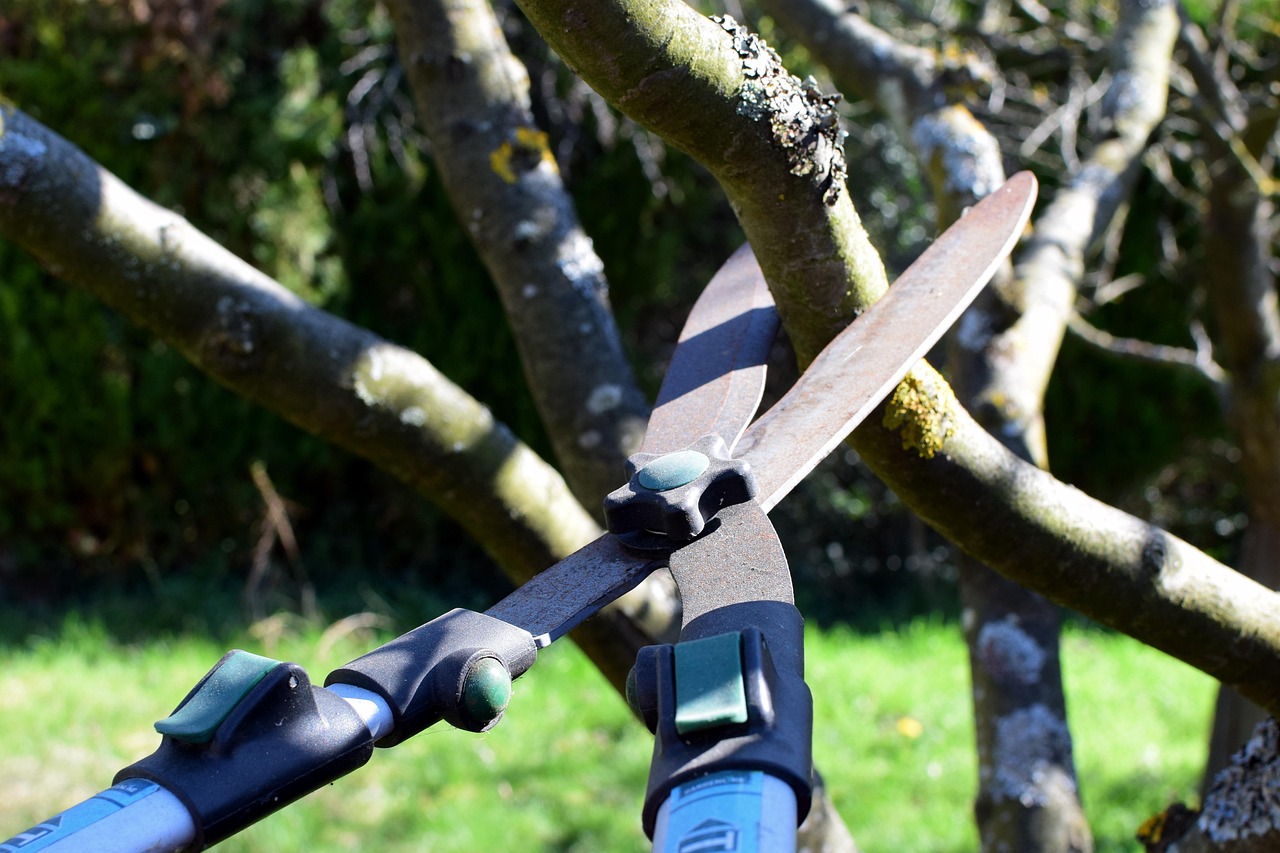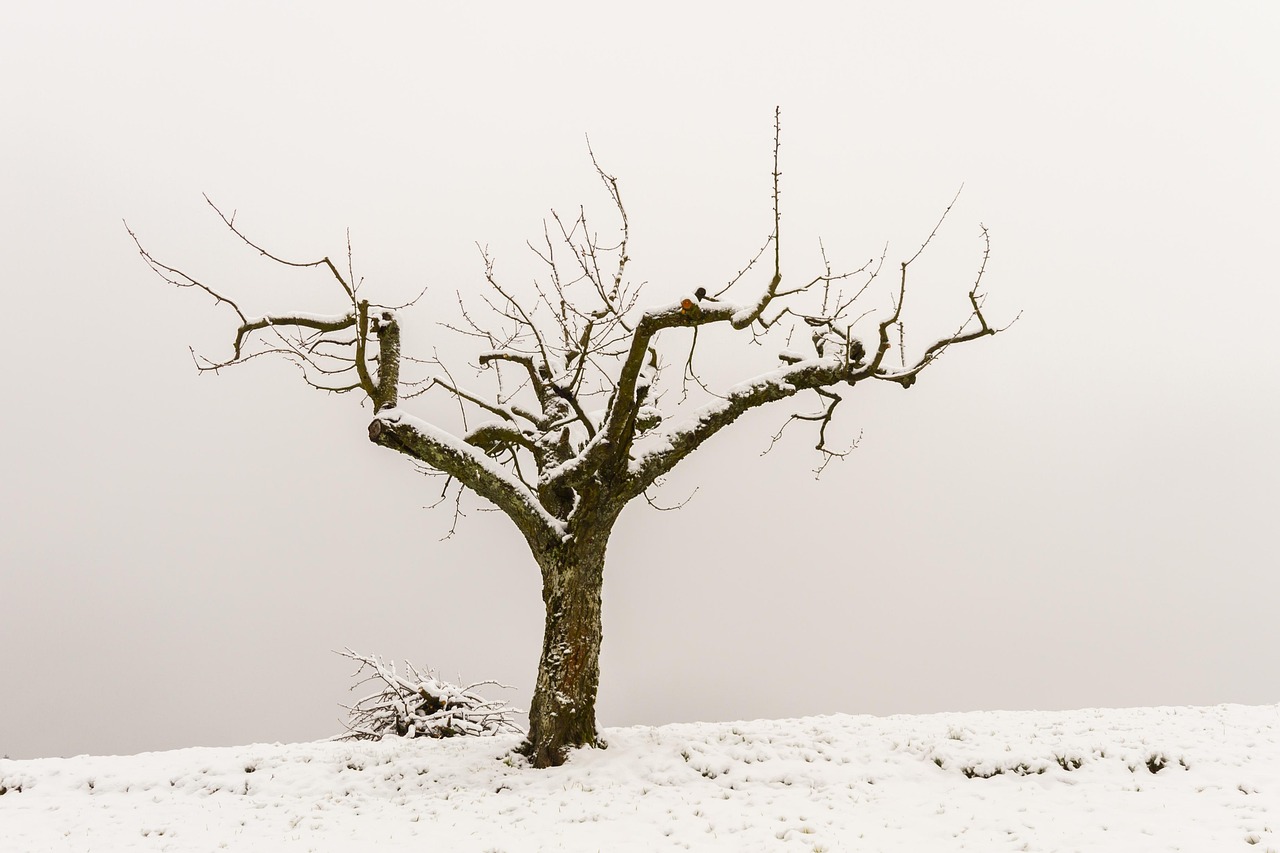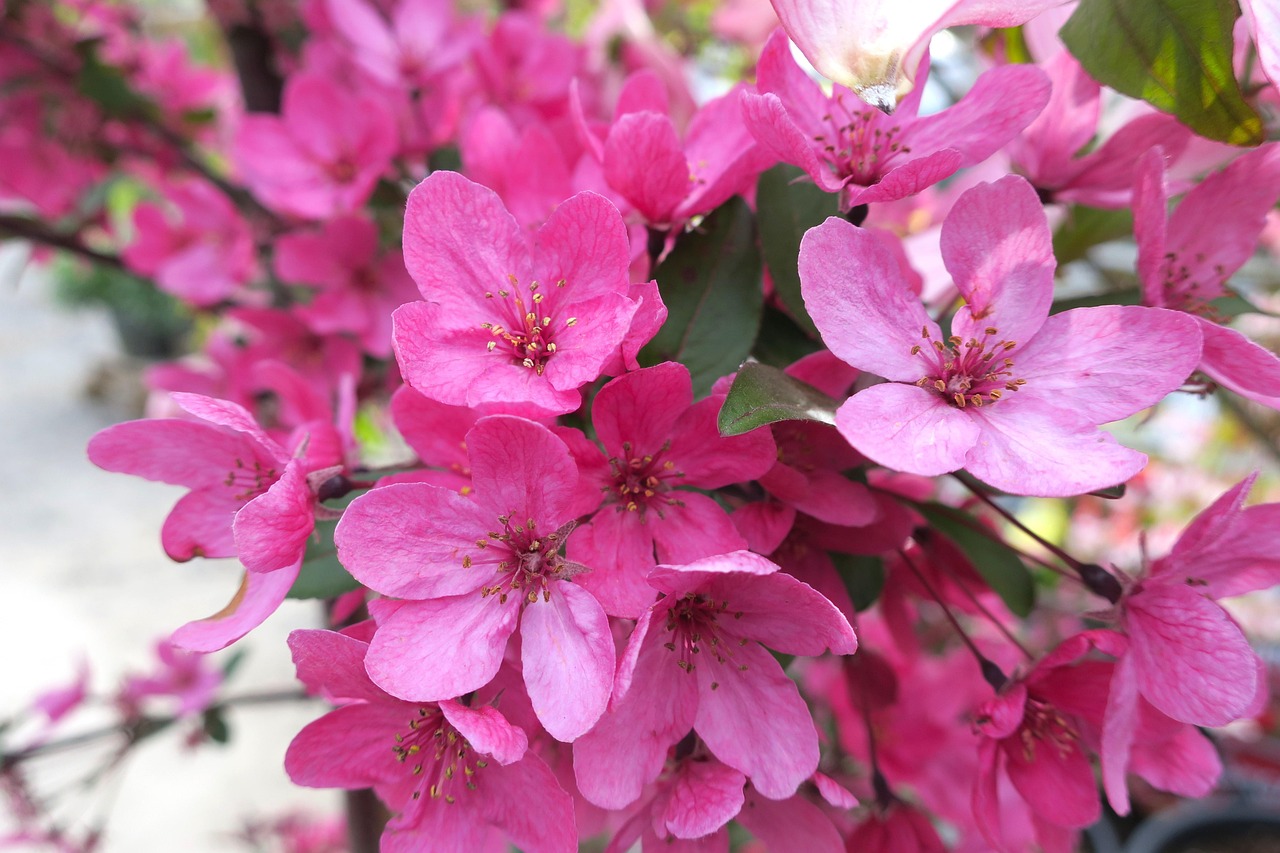Crabapple tree pruning is essential for maintaining healthy growth and beautiful blossoms. Pruning should take place in late winter or early spring before new growth begins. However, some maintenance can be done in summer and fall to enhance shape and remove dead or diseased branches.
Crabapple trees, with their stunning flowers and vibrant fruit, are a popular choice for gardens and landscapes. They belong to the Malus genus, which includes various species known for their ornamental appeal. Proper care and maintenance are crucial to ensure these trees thrive and continue to produce their beautiful blooms each season.

Pruning a crabapple tree not only improves its appearance but also promotes better health. It allows sunlight to reach more parts of the tree, which can improve air circulation and reduce the risk of disease. Additionally, pruning helps shape the tree, ensuring it maintains an attractive form that complements its surroundings.
The Importance of Pruning
Regular pruning plays a vital role in the overall well-being of crabapple trees. Here are some key reasons why pruning is important:
- Encourages Healthy Growth: Pruning removes dead or diseased branches. This encourages new growth and keeps the tree healthy.
- Improves Airflow: Thinning out dense branches allows better airflow through the tree, reducing the likelihood of fungal diseases.
- Enhances Aesthetic Appeal: Regular shaping helps maintain a visually pleasing structure. This makes the tree an attractive feature in any landscape.
- Increases Fruit Production: Pruning can lead to more fruit production by allowing light to reach more parts of the tree.
Understanding when and how to prune your crabapple tree throughout the seasons is essential for optimal results. Each season presents unique opportunities and techniques for effective pruning.

Seasonal Pruning Guidelines
Pruning should ideally be tailored to the specific needs of each season. Here’s a breakdown of what to do throughout the year:
Winter Pruning
Winter is often considered the best time to prune crabapple trees. During this period, the tree is dormant, making it easier to see its structure without foliage. Here are some tips for winter pruning:
- Examine the tree for dead or damaged branches and remove them carefully.
- Focus on thinning out crowded areas to improve airflow.
- Aim for a balanced shape by removing any branches that disrupt symmetry.
Spring Pruning
Spring pruning should be done before new leaves emerge. This helps the tree focus its energy on new growth. Key points include:

- Remove any remaining dead or damaged branches that were missed in winter.
- Cut back any overly long shoots to encourage bushier growth.
- Be cautious not to prune too much, as this can stress the tree right before it blooms.
Summer Pruning
Summer offers an excellent opportunity for light pruning. It can help control growth and shape the tree as it fills out. Consider the following:
- Look for suckers or water sprouts that grow vertically. Remove these to maintain a clean appearance.
- Trim back excessive growth that may obstruct pathways or other plants.
- This is also a good time to assess overall health, checking for signs of disease or insect damage.
Fall Pruning
Fall is generally not recommended for heavy pruning due to the potential for winter injury. However, some light maintenance can be beneficial:
- Remove any fallen fruit and debris from around the base of the tree to prevent pests.
- If you notice any late-season dieback, prune those areas to prevent further issues.
- Avoid major cuts that may expose the tree to winter stress.
With these seasonal guidelines, you can maintain a healthy and vibrant crabapple tree that enhances your landscape year-round. Each season offers unique opportunities for growth and beauty, making proper pruning an essential part of your gardening routine.

Tools and Techniques for Pruning
Having the right tools is essential for effective pruning of crabapple trees. Proper techniques ensure that cuts are clean and promote healthy regrowth. Here are some common tools you should have on hand:
- Pruning Shears: Ideal for small branches and new growth. Choose sharp, bypass shears for clean cuts.
- Loppers: Useful for larger branches that are too thick for shears. They provide extra leverage.
- Saws: A pruning saw is necessary for cutting thicker branches. Ensure it is sharp for efficient cutting.
- Gloves: Protect your hands while working with sharp tools and thorny branches.
- Ladder: A sturdy ladder may be needed for reaching tall branches safely.
Before you begin pruning, it is important to inspect your tools. Ensure they are clean and sharp to prevent injury to the tree and infection from disease. Disinfecting your tools before and after use can also help avoid spreading pests or diseases between trees.
Pruning Techniques
Using the right techniques can make a significant difference in the health of your crabapple tree. Here are some effective methods to follow:
- Cutting Angle: Make cuts at a slight angle, about 45 degrees, to promote healing and prevent water accumulation on the cut surface.
- Close to the Branch Collar: Always cut close to the branch collar, which is the swollen area where a branch meets the trunk. This helps the tree heal faster.
- Avoid Topping: Topping is the practice of cutting off the top of a tree. This can lead to weak regrowth and increased susceptibility to disease.
When pruning, always assess each branch’s health and structure. Removing a few strategically chosen branches can have a more positive effect than excessive cutting.
Signs of a Healthy Crabapple Tree
Recognizing the signs of good health in your crabapple tree can help you determine when to prune or provide additional care. Here are some indicators of a healthy tree:
| Sign | Description |
|---|---|
| Vibrant Foliage | Leaves should be green and lush without signs of browning or wilting. |
| Strong Growth Rate | New growth should be noticeable each year, indicating the tree is thriving. |
| No Pest Infestation | Healthy trees are less likely to attract pests. Check for any unusual markings or damage. |
| Abundant Flowers | A healthy crabapple tree will produce a wealth of blossoms in spring, indicating vitality. |
| Fruit Production | If applicable, fruit should develop properly and be free from blemishes. |
If you notice any signs of distress, such as discolored leaves or reduced flowering, it may be time to evaluate your pruning practices or overall care routine.
Pest and Disease Management
Pests and diseases can affect the health of crabapple trees, making regular checks essential. Here are some common issues to watch for and methods to manage them:
Common Pests
- Apple Maggot: These insects lay eggs in the fruit, leading to decay. Use traps or insecticides as needed.
- Aphids: Small insects that suck sap from leaves, causing curling. Regular spraying with water can help control their population.
- Spider Mites: These tiny pests create webs on branches. Increasing humidity and using insecticidal soap can help manage them.
Diseases
- Cedar Apple Rust: A fungal disease that requires both cedar and apple trees to thrive. Remove infected leaves and maintain proper spacing.
- Fire Blight: This bacterial infection causes branches to wilt and die back. Remove infected areas promptly to prevent spread.
- Powdery Mildew: Characterized by white powdery spots on leaves. Improve air circulation and apply fungicides if necessary.
Regular inspection and prompt action are key to maintaining a healthy crabapple tree. If you notice persistent problems, consult a local arborist or extension service for specialized advice.
Common Varieties of Crabapple Trees
Crabapple trees come in various species and cultivars, each with unique characteristics, including flower color, fruit size, and growth habit. Understanding these varieties can help you choose the best one for your landscape and provide specific care requirements. Below are some of the most popular types of crabapple trees:
| Variety | Description | Flower Color | Fruit Size |
|---|---|---|---|
| Malus ‘Prairifire’ | A disease-resistant variety known for its vibrant flowers and dark green leaves. | Pink | Small, about 1 inch |
| Malus ‘Spring Snow’ | This cultivar has white flowers and produces little to no fruit, making it a low-maintenance choice. | White | None |
| Malus ‘Donald Wyman’ | Features large white flowers and is known for its hardiness. | White | Medium, about 1-2 inches |
| Malus ‘Weeping’ (Malus pendula) | This ornamental variety has graceful, drooping branches and beautiful pink blossoms. | Pink | Small, about 1 inch |
| Malus ‘Red Jade’ | A stunning weeping variety with reddish-pink flowers and small fruit. | Reddish-Pink | Small, about 1 inch |
Timing Your Pruning
Timing is crucial when it comes to pruning crabapple trees. Each season presents unique challenges and benefits, influencing your approach to pruning. Here’s a detailed look at the best times to prune based on tree age and condition:
Young Trees
Younger crabapple trees benefit from formative pruning. The goal is to establish a strong structure that will support future growth. Prune during late winter or early spring before growth begins. Focus on:
- Establishing a central leader: Choose a strong vertical branch to be the leader and remove competing branches.
- Cleansing: Remove any dead or crossing branches to promote an open structure.
- Shaping: Encourage a balanced shape by selectively pruning branches that disrupt symmetry.
Mature Trees
Mature crabapple trees may require different pruning strategies as they develop. Here are some tips for maintaining their health:
- Regularly inspect for dead or diseased branches and remove them promptly.
- Focus on thinning crowded areas to enhance air circulation and sunlight penetration.
- Avoid heavy pruning, especially in spring, as this can reduce flowering and fruiting.
Special Considerations for Pruning Crabapple Trees
When pruning crabapple trees, keep in mind certain factors that may affect your approach. Here are some considerations to ensure successful pruning:
Weather Conditions
The weather can significantly impact your pruning efforts. Ideally, choose dry days for pruning. Wet conditions can promote disease transmission from cut surfaces. Here are some weather-related tips:
- Avoid pruning during rainy or excessively humid days.
- Prune when temperatures are mild to reduce stress on the tree.
- Check the forecast to ensure no frost is expected shortly after pruning.
Tree Health and Condition
The overall health of the tree should guide your pruning decisions. If the tree shows signs of stress or disease, it may require specialized care:
- If the tree is infested with pests or diseases, prioritize treatment before significant pruning.
- Assess the tree’s vigor; if it’s weak, limit pruning to essential cuts only.
- Consider consulting an arborist for guidance on trees in poor condition.
Aftercare Following Pruning
After pruning, providing proper care can enhance recovery and growth. Here are some important aftercare steps:
- Watering: Ensure the tree receives adequate moisture during its recovery. Water regularly but avoid overwatering.
- Mulching: Apply mulch around the base of the tree to conserve moisture and suppress weeds. Keep mulch away from the trunk.
- Fertilization: Assess the need for fertilizer based on soil tests. If necessary, apply a balanced fertilizer in early spring to support growth.
By following these guidelines for aftercare, you can help your crabapple tree thrive following pruning. Proper management will lead to healthier trees that produce vibrant blooms and fruit year after year.
Long-Term Care for Your Crabapple Tree
Maintaining the health of your crabapple tree goes beyond pruning and immediate aftercare. Long-term care is crucial to ensure that your tree remains vibrant and productive throughout its life. Here are some key aspects of long-term care that every crabapple tree owner should consider:
Soil Health
The health of the soil directly affects the well-being of your crabapple tree. Healthy soil promotes strong root development and supports overall growth. Here are some tips for maintaining soil health:
- Soil Testing: Conduct a soil test every few years to check for pH balance and nutrient levels. This will help you make informed decisions about fertilization and amendments.
- Organic Matter: Incorporate organic matter like compost into the soil to improve its structure and nutrient content.
- Diversity: Plant companion plants around your crabapple tree to encourage beneficial insects and improve soil health.
Pest Management Strategies
Beyond the common pests mentioned earlier, it’s essential to have a comprehensive pest management strategy. Here are some long-term pest management practices:
- Regular Inspections: Frequently check your tree for any signs of pest activity or disease. Early detection can prevent larger infestations.
- Natural Predators: Encourage beneficial insects like ladybugs and lacewings, which naturally control pests.
- Integrated Pest Management (IPM): Use a combination of cultural, physical, and biological controls alongside chemical treatments only when necessary.
Watering Practices
Proper watering is essential for the long-term health of your crabapple tree. Over- or under-watering can lead to various issues. Consider the following practices:
- Deep Watering: Water deeply but infrequently to promote deep root growth. This helps the tree withstand drought conditions.
- Mulching: Maintain a layer of organic mulch around the base of the tree to retain moisture and regulate soil temperature.
- Seasonal Adjustments: Adjust your watering schedule according to seasonal changes; trees may need more water during hot, dry spells.
Common Questions About Crabapple Tree Care
Many homeowners looking to care for their crabapple trees might have questions regarding specific aspects of their maintenance. Here are some frequently asked questions with insights to help you:
How often should I prune my crabapple tree?
Pruning should be done annually, focusing on dead, damaged, or diseased branches. Light shaping can also occur in summer if necessary. The main pruning is typically done in late winter or early spring.
Can I prune my crabapple tree in the fall?
Fall pruning is generally not recommended because it can expose the tree to winter injury. However, light maintenance such as removing fallen fruit or debris is acceptable.
What should I do if my tree has a disease?
If your crabapple tree shows signs of disease, promptly remove any infected branches. Consult with a local extension service or arborist for diagnosis and treatment options.
Final Thoughts
Caring for a crabapple tree involves understanding its unique needs throughout the seasons. From proper pruning techniques to ongoing maintenance, each step plays a vital role in the tree’s overall health and aesthetic appeal. Regularly assessing the condition of your tree and adjusting care practices accordingly will ensure that it flourishes year after year.
Whether you are enjoying the beauty of its blossoms in spring or the vibrant fruits in fall, a well-cared-for crabapple tree can be a stunning addition to any landscape. Embrace the journey of nurturing your tree with knowledge, patience, and love, and you will be rewarded with its beauty for many years to come.
The effort you invest in maintaining your crabapple tree will not only enhance its longevity but also contribute positively to the surrounding environment by providing shelter and food for various wildlife. Engage with your local gardening community for shared experiences and tips, and always stay curious about the best practices for keeping your crabapple tree thriving.
